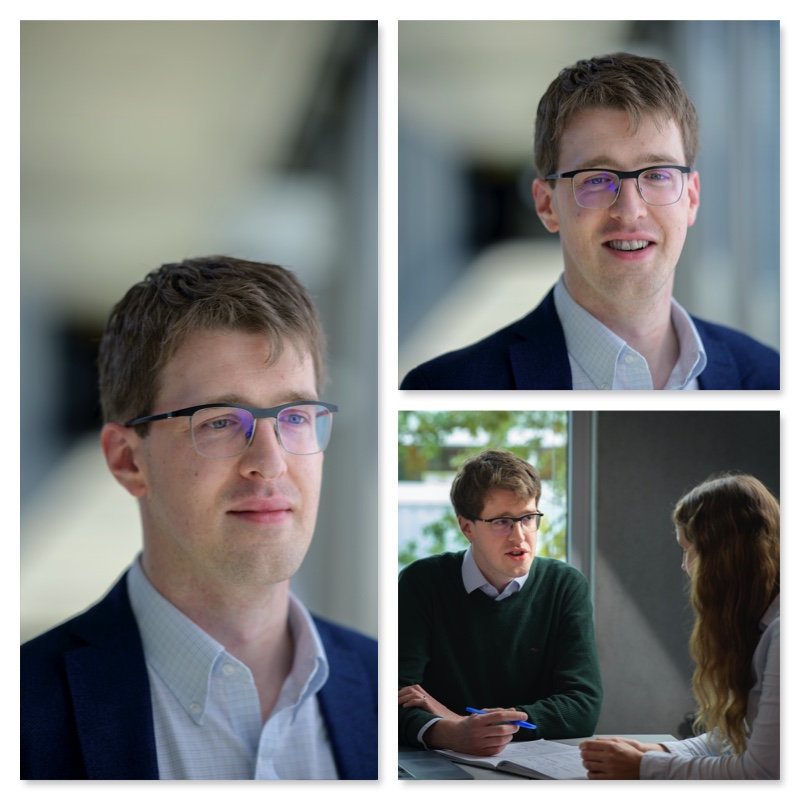Richard Stevens studies turbulent flows in wind farms
Richard Stevens is an associate professor at the University of Twente and a member of the Physics of Fluids group led by professor Detlef Lohse. The group belongs to the Faculty of Science and Technology and is embedded in the Max Planck Center Twente and the MESA+ institute. “My research focuses on using state-of-the-art high-fidelity computer simulations to study turbulent flows such as Rayleigh-Bénard convection, i.e., the flow that is created in a layer of fluid that is heated from below and cooled from above. Another important research area is the study of the turbulent flows in extended wind farms.” Although his research mainly focuses on fundamental questions, Stevens is aware he and his colleagues can produce solutions that can be of vital importance to the future of our planet.
“The world needs new ways to produce energy. Wind energy is an important step towards sustainability, and it could be an inexhaustible source of energy. That is what fascinates and inspires me in my research. Our research contributes to a solution the whole world can use to address this problem”, says Stevens.
The group’s current wind energy research focuses on optimizing wind farm layout. This requires a detailed understanding of the ways turbines affect the performance of nearby turbines. The scientist explains: “To study this, we adjust the layout of the wind farm in our simulations. High-fidelity wind farm simulations can only be performed using the latest supercomputers. The wind energy industry relies on simpler and computationally efficient models to improve the design of wind farms as they need to consider many scenarios. Our detailed simulations provide insights that can improve these simpler models.”
The associate professor is mastering the art of creating computer simulations of turbulent flows in wind farms. “I want to know which factors have a significant influence on the output of wind farms. It is a well-known fact that wind turbines placed in the front rows produce the most energy. Wind turbines placed behind the front row produce far less. The reason is that turbines in the front row extract energy from the wind leaving less energy available for the turbines downstream. The question is how the wind behind each turbine recovers as this determines the performance of downstream turbines. We also investigate the fundamental properties of atmospheric flows and how this affects wind farm performance. We need supercomputers to be able to study these dynamics. We know this is possible, computers are getting more powerful all the time. However, the question remains how to do this in the best and most reliable way.”
But Stevens’ research group also has other topics, such as Rayleigh-Bénard convection, to explore. The associate professor explains, “It is tempting, but also risky to focus on one solution. Our research group is also involved in several other research projects. Turbulent flows play a crucial role in a wide range of industrial applications, and therefore our research on turbulent flows is relevant for the optimization of such flows. This is an important motivation for the research we do.”
Research and education
PhD-students and postdocs form a vital part of the Physics of Fluids group. Stevens elaborates: “I mentor them as they perform research and generate new insights. I also teach courses at the university. I discuss the results of our research in my classes to demonstrate the social relevance and the practical application of theories discussed in class. Also, PhD-students and postdocs explain their research during these classes.”
Wind energy is a growing industry that attracts a lot of interest from fellow researchers and businesses. “This adds to the relevance and value of our research. Our Master- and PhD-students contribute to the knowledge-based economy and will help to fulfill the growing need for professionals in these subjects,” says Stevens.
About Richard Stevens
Richard received his Ph.D. in Applied Physics at the University of Twente with distinction in June 2011. In July 2011, He started his professional career as a postdoc in the Physics of Fluids group of Prof. Detlef Lohse at the University of Twente. Stevens became a FOM Young Energy Scientist (FOM-YES) fellow in May 2012. He joined the Turbulence Research Group of Prof. Charles Meneveau at the Johns Hopkins University in the United States, working on the international WINDINSPIRE project. He returned to the University of Twente in September 2015, where he works as a SHELL-NWO/FOM Computational Science and Energy Research (CSER) tenure track Associate Professor. He received a VIDI grant in 2016 and an ERC starting grant in 2018.
Press Photos
Click on thumbnails to open the picture folder. These press photos can be used without copyright restrictions.

